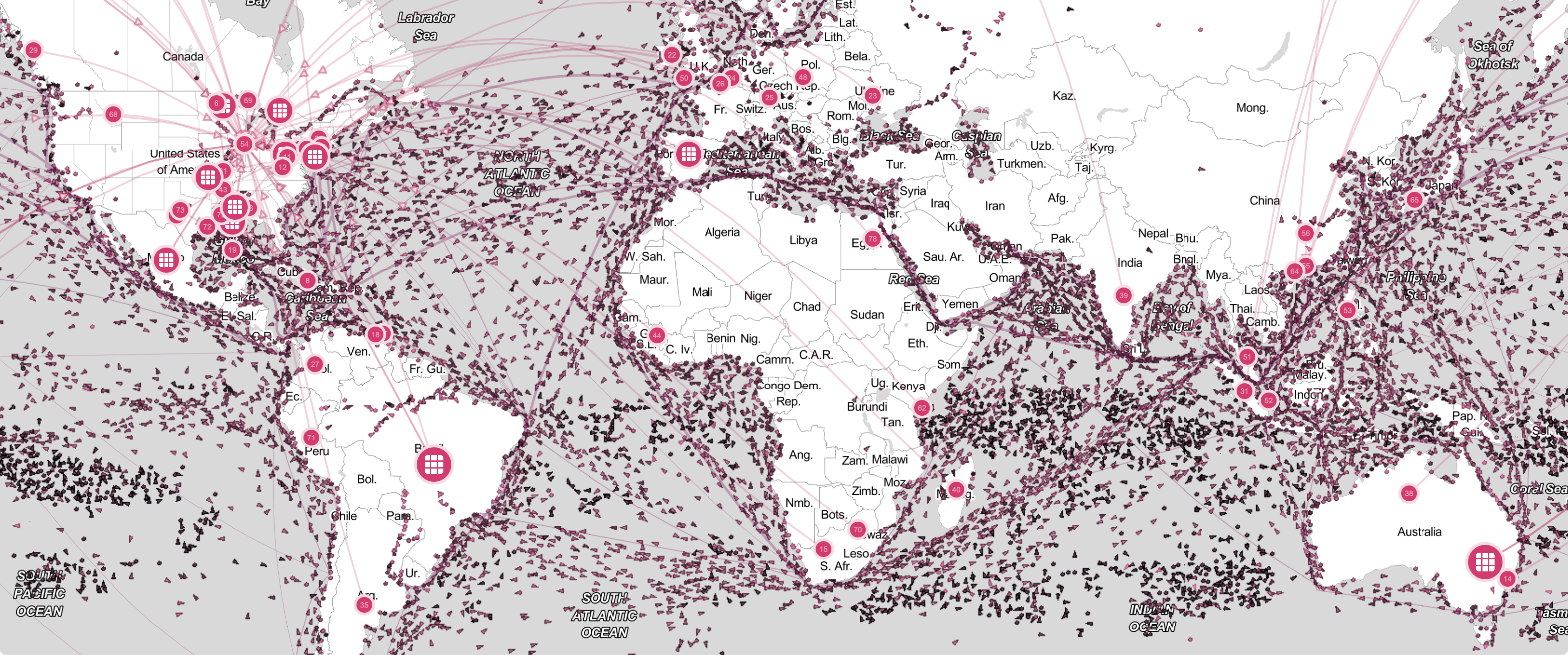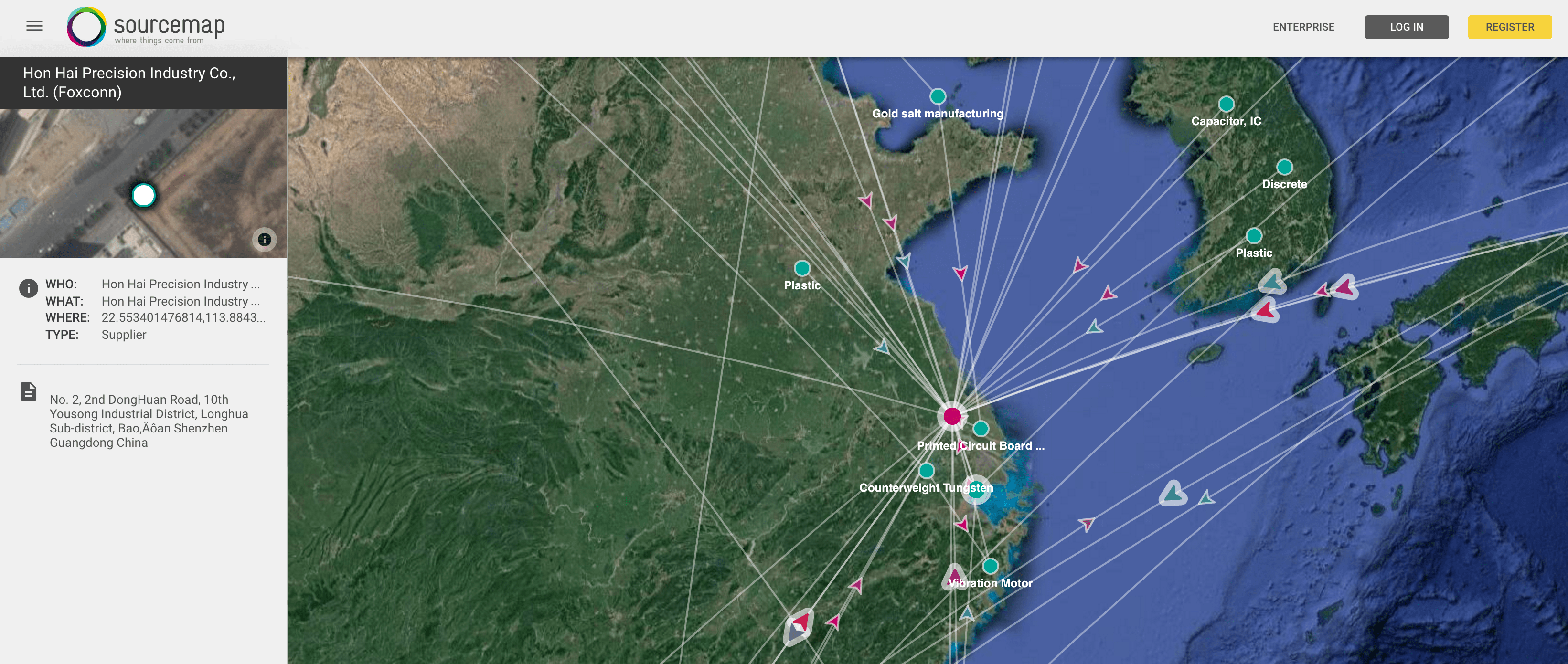Manifest
Manifest is a digital humanities platform and investigative toolkit for visualizing, analyzing, and documenting historic and contemporary supply chains, production lines, and trade networks. Intended for scholars and researchers exploring the history of assembly and distribution logistics in commodity manufacture and other forms of production, Manifest provides common data standards for supply chain description while offering an attractive publishing capability for spatial narratives that leverage geographic and statistical means of evaluation. Logistics, as Alberto Toscano writes, should be thought, “not just as the site of interruption, but as the stake of enduring and articulated struggles.” In this way, the means through which we articulate that struggle endure only so long as we are able to both catalogue and critique the reach of the global apparatus of production, its contemporary conditions, and its material history.

Manifest
Sourcemap
Sourcemap was developed at MIT as a collaboration between the Center for Civic Media and Tangible Media Group. A platform for sharing supply chains and evaluating their social and environmental impact, it included the first open source carbon footprint database on the web. While all of the data and software behind the platform has been made available under open source licenses, Sourcemap has become a company (sourcemap.com) advancing the principle that people have a right to know where products come from.

Sourcemap visualization of a laptop computer, circa 2008.
The Center for Analog Humanities / Dead Media Streaming Service
The Center for Analog Humanities is a media archaeology research program for studying historic networks of media production. A collection of obsolete media devices, computing platforms, and communication technologies, it develops tools and pedagogical techniques for studying dead media technologies, forms, and formats by reconstructing their place at the center of particular networks of production and consumption.
The Dead Media Streaming Service and its corresponding screening series serve as the flagship project of this research program. It repurposes retired media players to stream “dead” home media formats like Betamax, Super 8, and Laserdisc as they were originally intended: with low definition video, poorly synced audio, jittery images, and plenty of frame loss.
Logistical Fictions
Logistical Fictions was a curatorial project that indexes the fictional designs and devices—the bills, parts lists, maps, catalogues, containers, and concepts—of imagined logistical operations and infrastructure in film, literature, art, and music.
App Autopsy
App Autopsy is a tool for use in digital “dissections” similar to the sort performed by product designers on physical products. While the name of the tool implies the inspection of a dead object, it is intended for use on “living” artifacts: websites and web applications which are still in use, and still capable of being transformed. It reveals elements of digital designs that cannot be seen through their front-facing interfaces, classifying the components used to build web applications while evaluating these components according to corresponding value criteria drawn from a collaborative database of value assessments. In this way, the Digital Application Autopsy engages in an artifact-altering strategy, revealing the distribution of politics and power which digital applications otherwise obfuscate.
Placemap
Placemap was a system for acquiring semantic spatial knowledge and for interpreting that knowledge in meaningful ways. This system was divided into two components: an interaction architecture designed for the acquisition, annotation, and collection of spatial data, and a parser designed to organize and structure spatial knowledge.

